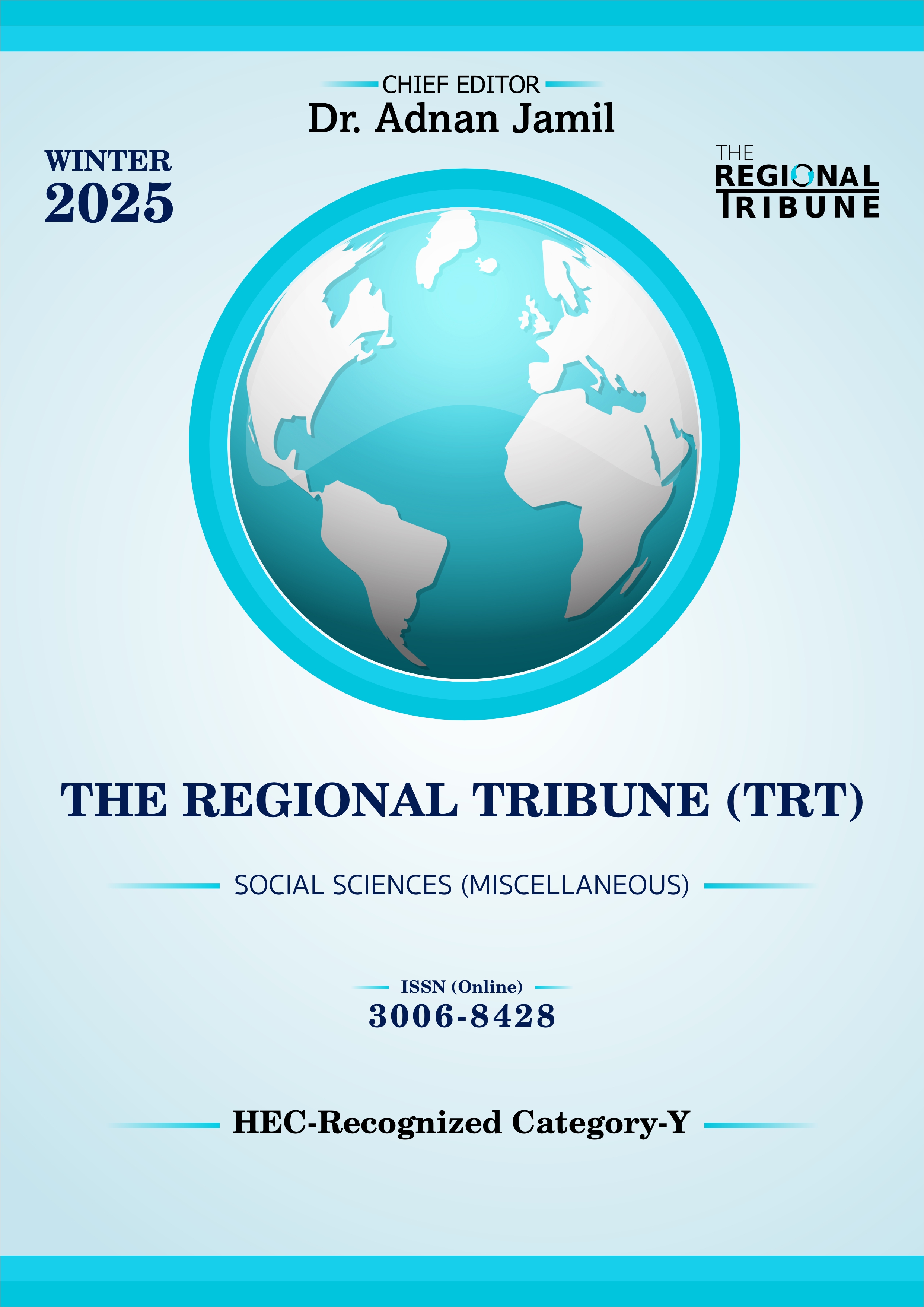Cultural Representation and Hybrid Identity Formation in Punjabi Cinema: Exploring the Punjabi Diaspora in North America
DOI:
https://doi.org/10.63062/trt/WR25.064Keywords:
Cultural Negotiation, Diasporic Identity, Globalization, Hybridity, Postcolonial Theory, , Punjabi CinemaAbstract
This study examines the concept of hybridity in Punjabi cinema, exploring how character representations authentically depict the diasporic Punjabi identity in North America. Furthermore, it analyses the transformative impact of Punjabi cinema on these identities that shape and redefine their cultural expressions and experiences. In this research, the postcolonial theories of Homi K. Bhabha, Edward Said, and Stuart Hall have been used to investigate how Punjabi films portray the complex relationship between traditions and modern influences through the concept of Hybridity. Films such as Aaja Mexico Challiye (2017), Pind America (2023), Ashke (2018), and Jatt & Juliet 2 (2013) serve as case studies to illustrate the negotiation of diasporic cultural identities that highlight the media's influence in shaping and articulating new hybrid cultural forms. The findings suggest that Punjabi cinema is more than just a medium of entertainment; it also reflects the diasporic experience. It serves as an active space where a transcultural identity is shaped, one that resonates with the realities and evolving needs of the Diaspora. This insight adds depth to cultural studies by highlighting the complexities of identity formation in a globalised world. It also reveals how individuals within the Diaspora continuously negotiate, adapt, and transform their cultural identities in response to changing circumstances.
References
Bhabha, H. K. (1994). The Location of Culture. Routledge.
Brody, E. B. (1969). Migration and adaptation: The nature of the problem. The American Behavioral Scientist, 13(1), 5–13. https://doi.org/10.1177/000276426901300101
Cerezo, A., Cummings, M., Holmes, M., & Williams, C. (2019). Identity as Resistance: Identity Formation at the Intersection of Race, Gender Identity, and Sexual Orientation. Psychology of Women Quarterly, 44(1), 67–83. https://doi.org/10.1177/0361684319875977
Cohen, R. 2008. Global Diasporas. Routledge. https://doi.org/10.4324/9780203928943
Dhawan, R. (Director). (2022). Aaja Mexico Challiye [Film]. Ammy Virk Productions
Gill, H. S. (2012). Masculinity, mobility and transformation in Punjabi cinema: FromPutt Jattan De(Sons of Jat Farmers) toMunde UK De(Boys of UK). South Asian Popular Culture, 10(2), 109–122. https://doi.org/10.1080/14746689.2012.682858
Hall, S. 1990. Cultural identity and diaspora. Routledge. Said, E. W. (1993). Culture and Imperialism. Vintage.
Myers-Scotton, C. (2017). Code-Switching. The Handbook of Sociolinguistics, 217–237. https://doi.org/10.1002/9781405166256.ch13
Rogulsky, D. A. (2024). Cultural and Ideological Problems in the Migrant Adaptation and Integration Sphere. Migration Law, 1, 32–36. https://doi.org/10.18572/2071-1182-2024-1-32-36
Said, E. W. (1993). Culture and Imperialism. Vintage.
Sanchez-Stockhammer, C. (2011). Hybridization in Language. Conceptualizing Cultural Hybridization, 133–157. https://doi.org/10.1007/978-3-642-21846-0_9
Shah, Dr. M. (2016). Cultural Hybridity: A Postcolonial Concept. SMART MOVES JOURNAL IJELLH, 4(12), 7. https://doi.org/10.24113/ijellh.v4i12.1783
Sidhu, S. (2020). Revival of Punjabi cinema -Understanding the dynamics. Global Media Journal-Indian Edition, 12(2), 2249–5835. http://gmj.manipal.edu/issues/december2020/Simran-GMJ.pdf
Singh, A. (Director). (2013). Jutt and Juliet 2. Youtu.be; White Hill Studios. https://youtu.be/LGFJe9e18os
Singh, A. (Director). (2018). Ashke. Rhythm Boyz Entertainment and Hayre Omjee Studios. https://youtu.be/ZEeQ7XpBPUQ
Singh, S. (2023). Pind America. Jeet Films Entertainment.
Smith, A. (2004). Migrancy, hybridity, and postcolonial literary studies. The Cambridge Companion to Postcolonial Literary Studies, 241–261. https://doi.org/10.1017/ccol0521826942.013
Srimany, B. (2023). E-Cine India / The Films of Gulzar: Ideology and Social Issues. https://fipresci-india.org/wp-content/uploads/2023/04/Bakul-Srimany-Gulzar.pdf
Zhang, X. (2024). Film as a Form of Cultural Medium: Trends of the Film Industry. Transactions on Social Science Education and Humanities Research, 11, 367–373. https://doi.org/10.62051/64ymxm60
Zheltukhina, М. R., N.M. Kislitsyna, Tatyana Yu. Tameryan, Baranova, K. M., Chupryna, O. G., & Ольга Вячеславовна Сергеева. (2023). Identity construction and self-identification of the protagonist in the film media discourse: Multi-modal linguo-semiotic approach. Online Journal of Communication and Media Technologies, 13(3), e202323–e202323. https://doi.org/10.30935/ojcmt/13096
Downloads
Published
Issue
Section
License
Copyright (c) 2025 Abbas Jan, Dr. Tahir Jamil, Khalil Ur Rehman

This work is licensed under a Creative Commons Attribution-NonCommercial 4.0 International License.



